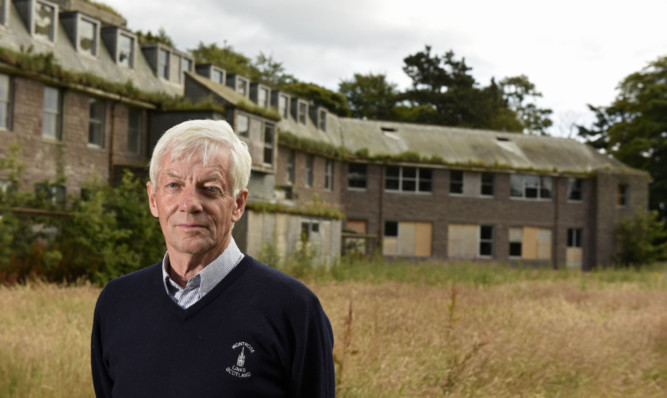Scotland’s first purpose-built asylum must be saved from the same fate as Strathmartine Hospital, it has been demanded.
Sunnyside Hospital at Hillside closed in 2011 after serving as a mental health unit in rural Angus for 153 years.
Notable patients included Arthur Conan Doyle’s father and outsider artist Adam Christie.
Landowner NHS Tayside wants to see the site redeveloped for residential, commercial and community use, and commissioned Jones Lang LaSalle to develop a master plan.
The health body has now applied for listed building consent to demolish the hospital’s former chapel and Angus House building, along with outbuildings and the nearby Laurel Cottage.
The proposed local development plan stated that regeneration of the estate is a “priority” of the council, and provides an opportunity for a “significant number” of homes alongside employment, community and recreational facilities.
Local councillor David May said the massive buildings will be a challenge to redevelop.
But be believes something must be done to avoid a fate like Strathmartine Hospital, which has fallen prey to vandals and fireraisers since it closed in 2003.
“It is a great pity to see any of the buildings on the site being demolished as most of them are beautiful and superbly built,” he said.
“However, it would also be a great pity for them to fall into total disrepair due to neglect, as this has occurred on other hospital sites.
“Something must be done to keep it in use. It would be great news if a developer with grand design vision takes it on and saves some wonderful buildings.”
Consultant Simpson & Brown said the main building and hospital block represent “some of the finest hospital architecture in Scotland” but a number of buildings “are now at risk”.
The Montrose Lunatic Asylum, Infirmary and Dispensary was founded in 1781 by Susan Carnegie of Charleton.
Originally situated on Montrose Links, an improved asylum at Sunnyside Farm was designed by William Moffat in 1857 and became operational in 1858.
With the introduction of the NHS, the asylum was renamed the Royal Mental Hospital of Montrose, and again as Sunnyside Royal Hospital in 1962.
